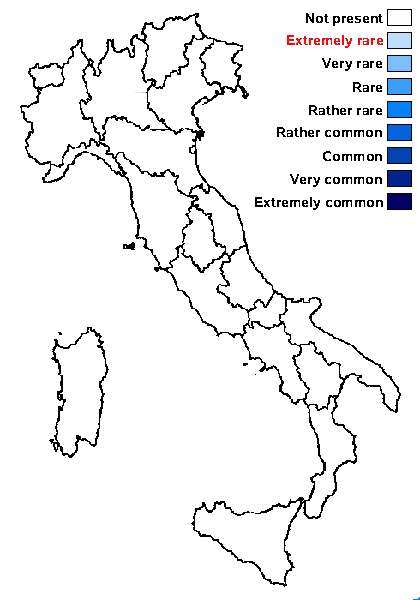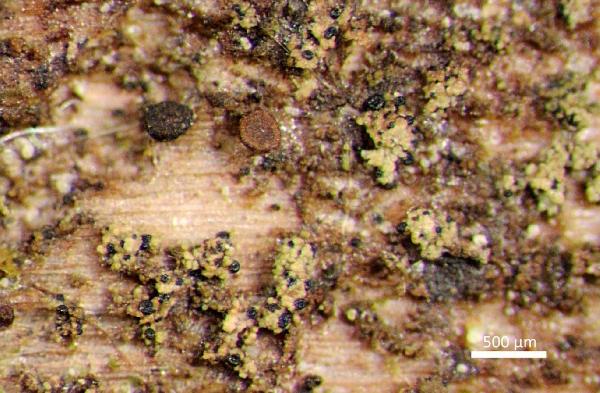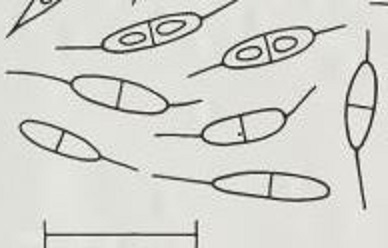Epigloea urosperma Döbbeler
Sendtnera, 2: 277, 1994
Synonyms:
Distribution:
Description: Thallus inapparent, the hyphae immersed into gelatinous algal films, probably not lichenized (perhaps a parasite of algal colonies). Ascocarps perithecioid, but sometimes appearing almost apothecioid, globose, (0.08-)0.1-0.15(0.2) mm across, dark greenish to green-black (paler in the immersed parts), shiny black when dry, surrounded by a thin, colourless gelatinous layer, with a marked depression around the 10-20(-30) µm wide ostiole. Exciple of pigmented, periclinally oriented hyphae, c. 15-20 µm thick; paraphyses thread-like, 1.5-2 µm thick, simple or rarely forked in upper part. Asci 32-spored, clavate-cylindrical, moderately thick-walled, non-fissitunicate, the entire ascus wall I+ and K/I+ blue, (26-)35-50(-60) x 8-10(-11) µm. Ascospores 1-septate, hyaline, ellipsoid with rounded ends, thin-walled, (5-)6-8(-9) x 2-3(-3.5) μm, with c. 4-6 μm long, very thin and thread-like appendages at both ends (rarely at one end only). Pycnidia 35-65 µm across, globose, hardly distinguishable from young perithecia. Conidia bacilliform to rarely subclavate, 2.5-3.5 x 0.5 µm. Photobiont absent but the species is associated with Coccomyxa-like or other chlorococcoid algae. Spot tests: all negative. Chemistry: without lichen substances.Note: a lichenicolous fungus developing on the thalli of Placynthiella-species. To be looked for in Italy.
Growth form: Crustose
Substrata: lignum, soil, terricolous mosses, and plant debris
Photobiont: green algae other than Trentepohlia
Reproductive strategy: mainly sexual

Predictive model

Source: Myllys, L. & Launis, A. 2018. Additions to the diversity of lichens and lichenicolous fungi living on decaying wood in Finland. Graphis Scripta 30 (6): 78–87. Oslo. ISSN 2002-4495 - CC BY-4.0
Epigloea urosperma. Launis 1884 (H). Photo A. Launis.
Growth form: Crustose
Substrata: lignum, soil, terricolous mosses, and plant debris
Photobiont: green algae other than Trentepohlia
Reproductive strategy: mainly sexual

Predictive model

 INDEX FUNGORUM
INDEX FUNGORUM
 GBIF
GBIF



